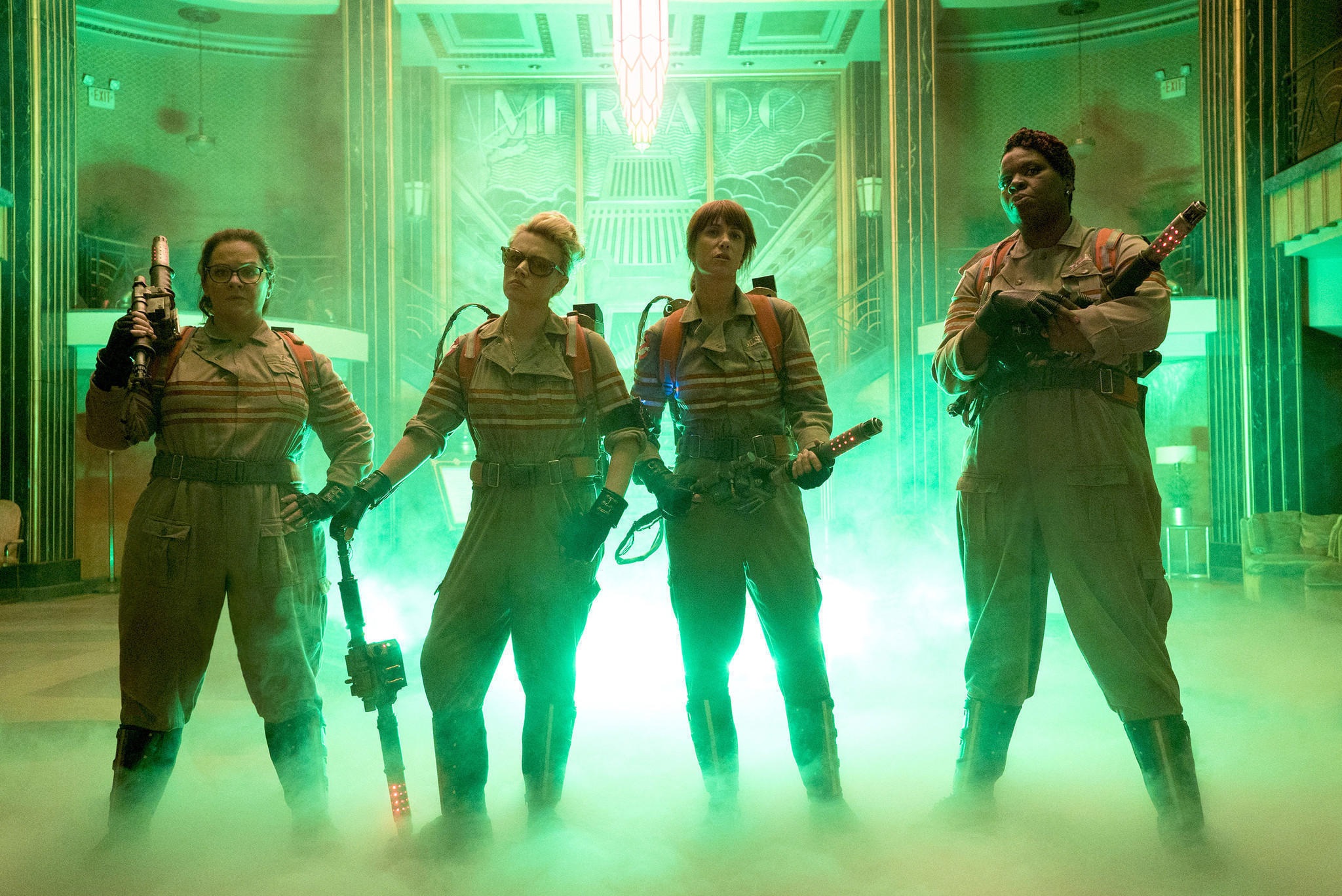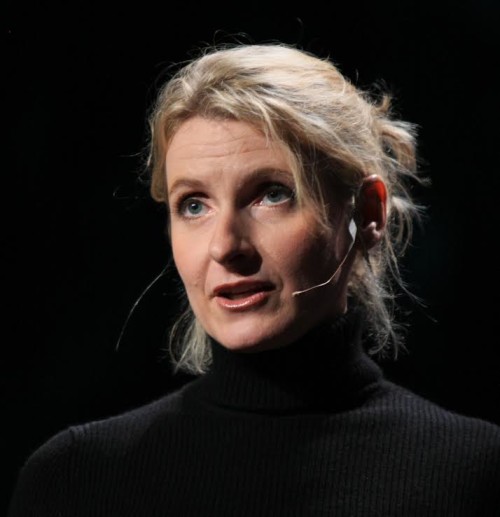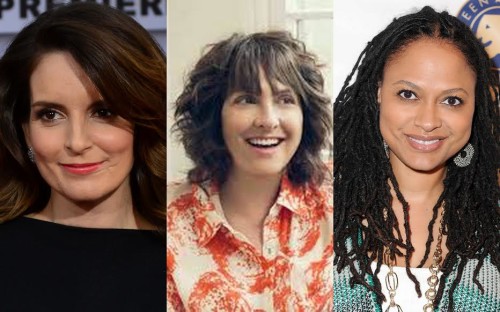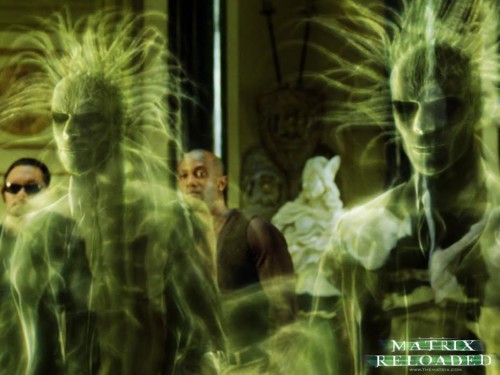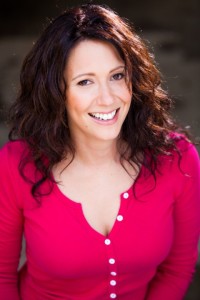This guest post written by Kimberly Dilts appears as part of our theme week on Women Scientists.
One of my smartest, funniest friends, playwright Megan Gogerty, came home from Ghostbusters the other night, rightfully full of joy about having just seen four fully fleshed-out female characters spend the length of a film “nerding out on science and history.” She pointed out something about the experience that was revolutionary. Wait. More revolutionary than FOUR WOMEN NERDING OUT ABOUT SCIENCE IN A MAJOR MOTION PICTURE, you ask? Yes, MORE revolutionary. I’m going to let her tell you in her own words because frankly, she’s smarter and funnier than I am:
“That fight scene? I can’t… To see four women! Kicking ass as themselves, with not a single spandex leather catsuit or wedge heels to be seen! THEY ALL HAD THEIR HAIR TIED BACK. Do you understand how radical that is? The simple act of, y’know, getting your hair out of your fucking face before you fight a monster, rather than having it whipped sensually around over your eyes, blocking your vision? Buffy couldn’t do it. Mrs. Smith couldn’t do it. Sydney Bristow couldn’t do it. They were all forced into the Implausible Battle Hair code of conduct for genre heroines. If you are a man and were bored and didn’t notice their hair was tied back during the battle scene, may I humbly and gently suggest perhaps that you may not know what it’s like to be out in the desert, to not see yourself — to never, ever, ever, ever, ever see yourself — in a genre picture without having to squeeze yourself into the impossible corset the Male Gaze requires.”
I want to stop here and invite you to ponder this with me for a moment. In 2016, in cinema, it is a revolutionary act to see a woman tie her hair back on-screen in order to accomplish a task. Not to flirt – not because the messy bun makes her look cute in that “I just woke up and don’t really care what I look like but still look like a model kind of way” – but to just do a thing without getting her hair in her mouth. It is simply not done. That’s how low the bar is set for women in film.
We don’t just need female scientists on-screen, we need female scientists on-screen who have cellulite, and wear flats, and have passionate conversations about substantive, quantitative, peer-reviewed flovinium-laced flaxum jaxum time fluxes. We need women scientists on-screen who are women of color, LGBTQIA women, and women with disabilities. We need female characters who don’t cater to the Male Gaze — who, when going to fight monsters (as scientists often do in the movies, let’s face it), don fucking power ponytails.
It has to be normal for women to wield power in films. We need to see women be the smartest and to have a variety of body sizes, like men get to have. Why? Because story is how we understand the world. We create perception (and therefore, personal reality) through story, which has an immediate effect on reality because thoughts become words, and words become action (or inaction — how many young girls stay away from pools because they internalized the message that they don’t have “bikini” bodies?). If we normalize women in science on film, it helps to enable more women to be scientists in the real world. Don’t think media has that much power? Take a look at what CSI did for forensic science, or what Jaws did to (and then for) sharks, or what Frozen did for ice princesses. The X-Files‘ character “Dana Scully inspired many young women to pursue education and careers in science and technology – what is now known as ‘The Scully Effect.'”
THIS IS WHY FEMALE LED FILMS ARE IMPORTANT pic.twitter.com/DsCj0NlHvg
— trudie (@hoItzmanns) July 10, 2016
In high school, I was a “nerd.” I got straight A’s and I went to The International Science Fair. When it was suggested that I think about theoretical physics as a career, I actually did think about it… and then opted for a career in the arts instead because I’m a glutton for punishment who likes not having any money. Now, I don’t regret my choice, but I do sometimes wonder, would I have actually become a theoretical physicist if I had had, say, a single female science teacher? Or any signal from popular culture that a girl choosing science for a career was, if not cool, at least normal? I have no idea. But science tells us that outcome would certainly be more probable if I’d had even one woman role model in STEM.
We are truly in a moment of struggle over whose stories are being told. Do filmmakers believe that women are active protagonists worthy of their own tales, or passive objects to be used to further male narratives? It’s as big and infuriating and important as that — what is the story we want to tell about a woman’s place in the world? There are countries where women are not allowed to drive, women are put to death for having been raped or for reading. Here in the U.S., women contend with misogyny and sexism, rape and sexual assault, intimate partner violence, abortion restrictions, unequal pay, and sexual harassment. Women of color face racism; Black women face racism and police brutality. Queer women face homophobia and biphobia. Trans women face transphobia, harassment, and murder. The story that society currently tells is that women are property to be controlled — we are the discovered, not the discoverers, and cinema reinforces this notion in a million little destructive ways every day.
So yes, we need more women scientists in film. We need more women senators, and pilots, and coders, and entrepreneurs and activists, and filmmakers, and we need it to be totally normal for women of all races and ethnicities and sexual orientations to be these things on the big screen.
We need women to write, direct, produce, and fund these stories. Because despite overwhelming evidence that women want to see themselves on-screen and will pay cash money to do so, Hollywood, seems determined to maintain the status quo. If we want to see change, and we want to see our stories told from our point of view, we have to do it ourselves. So I’m writing a mermaid comedy about a marine biologist. It’s going to be broad, and goofy and by god, there will be ponytails. Who’s with me?
Photo of Margot Lee Shetterly, author of ‘Hidden Figures’ which is being adapted into a film, by NASA in the public domain.
Kimberly Dilts is a Los Angeles-based writer/producer/performer currently touring her second feature film, Auld Lang Syne on the festival circuit. She’s also currently working on rewrites for two films, both featuring female protagonists. You can learn more about her work at www.scrappycatproductions.com and follow her on Twitter @kmdilts.
